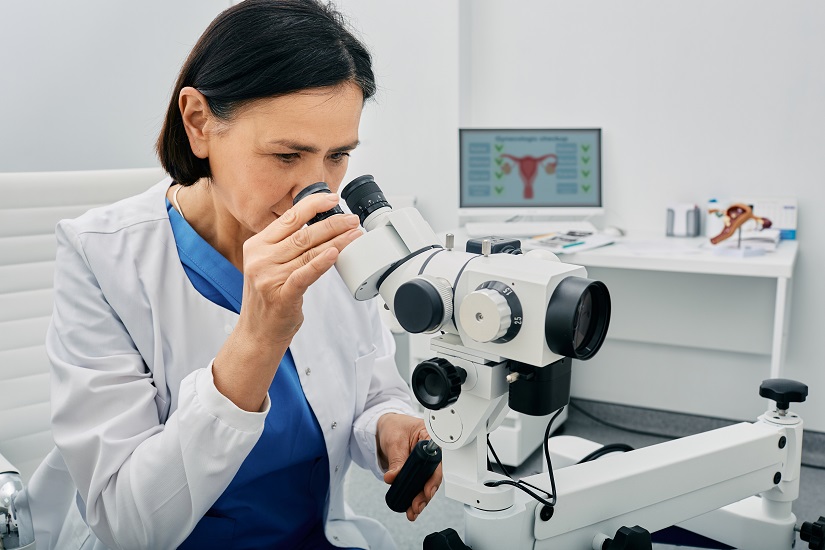Dysphoric milk ejection reflex (D-MER) is a condition that causes sudden negative emotions during...
Read More
Facing a colposcopy can bring up questions and concerns. We strive to make the process as comfortable and reassuring as possible with our personalized care and support.
A colposcopy is an outpatient procedure that examines your cervix, vagina and vulva for irregularities and signs of disease. It's similar to a Pap test but gives your doctor better visibility by using an instrument called a colposcope. This tool magnifies the area, making it easier to spot abnormalities that might need further investigation.
Your doctor might recommend a colposcopy if you have abnormal Pap test results, abnormal pelvic exam results, a positive human papillomavirus (HPV) test or symptoms like unexplained bleeding or pain. During the procedure, your doctor might also perform a biopsy, which involves taking a small tissue sample from your cervix. This sample is sent to a lab for further testing to determine if any abnormal cells need treatment.
A colposcopy uses a colposcope, a device with a light and a magnifying lens that allows your doctor to see your cervix and surrounding areas in detail. You’ll lie back on an exam table, like during a regular Well-woman exam. Your doctor will gently insert a speculum into your vagina to hold it open, then apply a solution to your cervix. This solution helps highlight any abnormal cells by changing color.
The procedure typically takes about 10 to 20 minutes. During the colposcopy, your doctor might take a biopsy if they see any unusual areas.

Avoid using tampons, douching or having intercourse for 24 hours before your colposcopy appointment. Schedule your colposcopy in between periods, as this can make the exam easier.
After a colposcopy, it’s normal to experience spotting or light bleeding for a few days, especially if a biopsy was taken. You might also have some mild cramping. Over-the-counter pain relievers can help with any discomfort. Your doctor will tell you when to expect the biopsy results and whether any follow-up is needed. After your procedure, you can contact your care team with any questions or concerns.
A colposcopy generally causes minimal discomfort. You may feel moderate pressure when the speculum is inserted and a brief pinch or cramp if a biopsy is taken. Talk to your doctor immediately if you experience significant pain.
Yes. The procedure doesn’t require sedation or anesthesia, and you can resume normal activities afterward.
Biopsy results are typically available within one to two weeks. Your doctor will talk through the test results with you and explain whether any further steps are needed.
Colposcopy is a safe procedure with minimal risks. However, some patients may experience light bleeding or infection, especially if a biopsy is performed. Talk to your doctor if you experience heavy bleeding, severe pain or signs of infection, such as a fever.
The frequency depends on your individual health needs and the results of your initial exam. Your doctor will explain how often you should undergo this procedure based on your overall cervical health.

Dysphoric milk ejection reflex (D-MER) is a condition that causes sudden negative emotions during...
Read More
Polycystic Ovary Syndrome (PCOS) affects millions, yet many misconceptions still surround this...
Read More
Painful periods are not indicators of good fertility. Rather, they may signal underlying health...
Read More
The material set forth in this site in no way seeks to diagnose or treat illness or to serve as a substitute for professional medical care. Please speak with your health care provider if you have a health concern or if you are considering adopting any exercise program or dietary guidelines. For permission to reprint any portion of this website or to be removed from a notification list, please contact us at (856) 537-6772